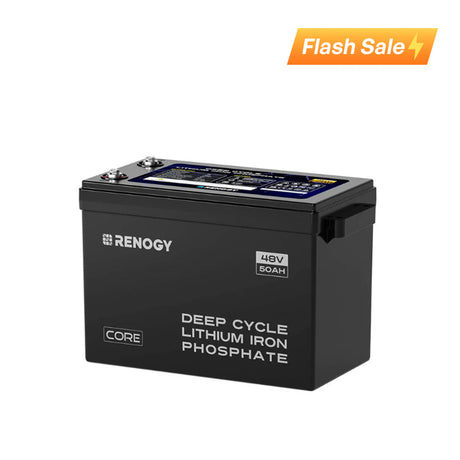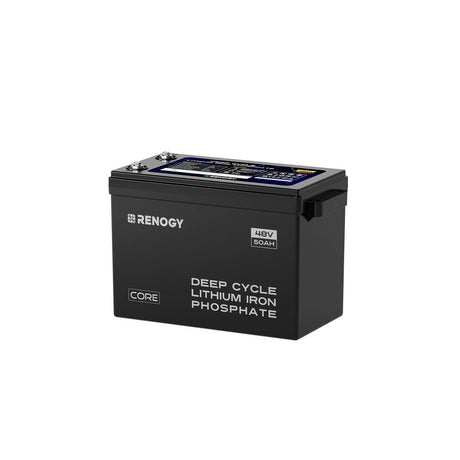Renogy Core Mini Series
This battery's compact and sleek design saves space, frees up room for easier connections and maintenance, and fits in various battery boxes, including 8D and 4D sizes.
Renogy Core Series
Power Your Off-Grid Freedom | Renogy Core LiFePO4: Reliable Solar Energy for Aussie RVs, Cabins, Fishing & 4WD. Long-Lasting Power, Zero Worries. Explore Further.
Renogy Pro Series
Renogy Pro LiFePO4: Unstoppable Power for Aussie Adventures. Built Tough for Catamarans, 5th Wheelers & Rugged Outback Living. Reliable & Safe Deep Cycle Performance.
Renogy Others
Renogy LiFePO4: The Toughest, Most Reliable Power for Demanding Aussie Conditions. Power Up Your RV, Boat or Remote Off-Grid Life with Confidence & Safety.
Renogy AU
Renogy Core Mini 12.8V 300Ah Lithium Iron Phosphate Battery w/ Low-Temperature Protection
From AUD$1,147.99AUD$1,274.99Unit price /UnavailableRenogy AU
Renogy Core Mini 12.8V 100Ah Lithium Iron Phosphate Battery
From AUD$476.99AUD$529.99Unit price /UnavailableRenogy AU
Core Mini - 12.8V 200Ah LiFePO4 Battery w/ Low-Temperature Protection
From AUD$809.98AUD$899.99Unit price /UnavailableRenogy AU
12V 200Ah Pro Deep Cycle Lithium Iron Phosphate Battery w/Bluetooth & Self-heating Function
From AUD$1,078.99AUD$1,198.99Unit price /UnavailableRenogy AU
12V 300Ah Core Series Deep Cycle Lithium Iron Phosphate Battery w/Self-Heating
From AUD$1,149.99AUD$1,414.99Unit price /UnavailableRenogy AU
12V 100Ah Pro Deep Cycle Lithium Iron Phosphate Battery w/Bluetooth & Self-heating Function
From AUD$635.99AUD$706.99Unit price /UnavailableRenogy AU
48V 50Ah Core Series Deep Cycle Lithium Iron Phosphate Battery
From AUD$1,168.99AUD$1,298.99Unit price /UnavailableRenogy AU
Renogy 12V 100Ah Trolling Motor Group 24 LiFePO4 Battery w/ Bluetooth
From AUD$479.99AUD$532.99Unit price /UnavailableRenogy AU
Renogy Core - 12V 200Ah Lithium Iron Phosphate Battery w/ Bluetooth
From AUD$809.98AUD$999.99Unit price /UnavailableRenogy AU
Renogy REGO - 12.8V 104Ah Super Slim Lithium Iron Phosphate Battery
From AUD$1,274.99AUD$1,416.99Unit price /UnavailableRenogy AU
Core Mini - LiFePO4 12V 300/200/100Ah Lithium Batterie
From AUD$471.99AUD$529.99Unit price /UnavailableRenogy AU
Pro - 12V 100/200Ah Smart Lithium Iron Phosphate Battery w/ Bluetooth & Self-Heating
From AUD$635.99AUD$706.99Unit price /Unavailable

























